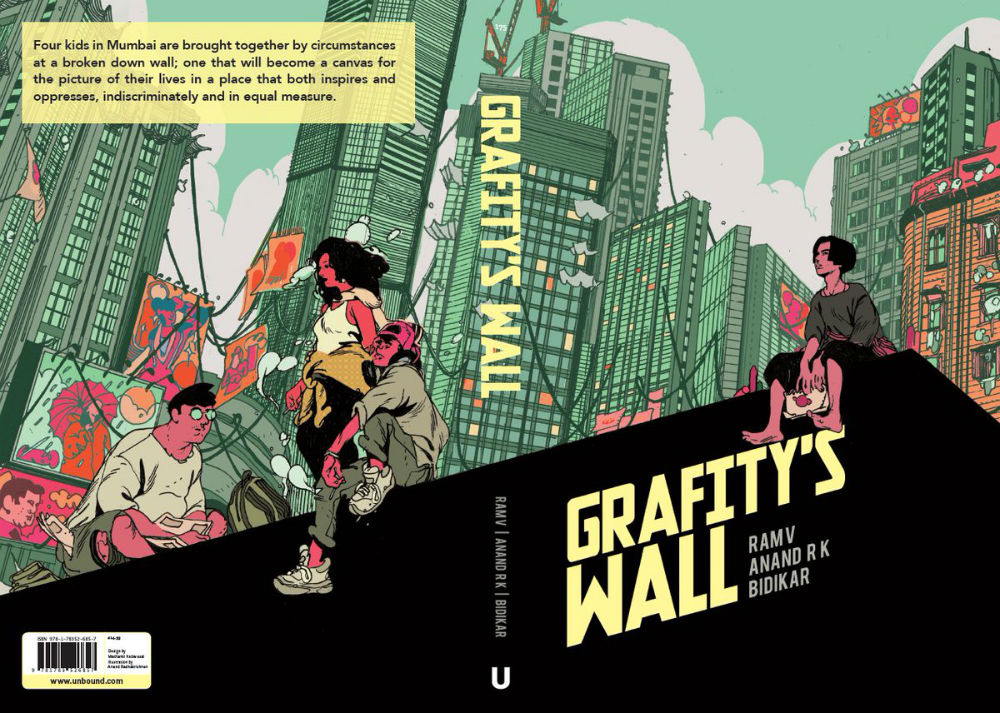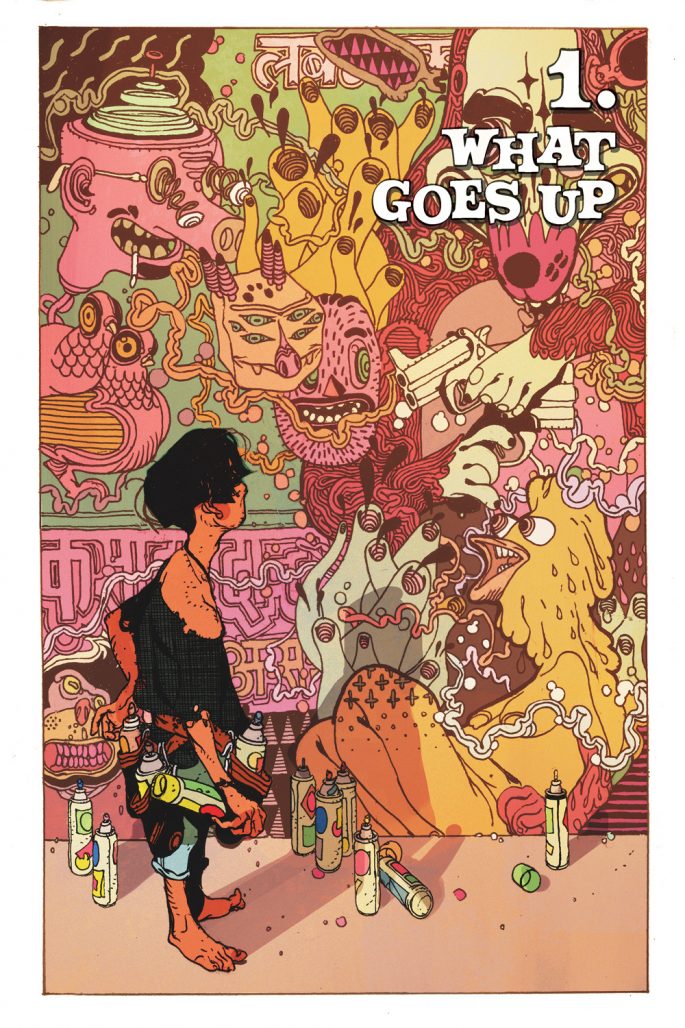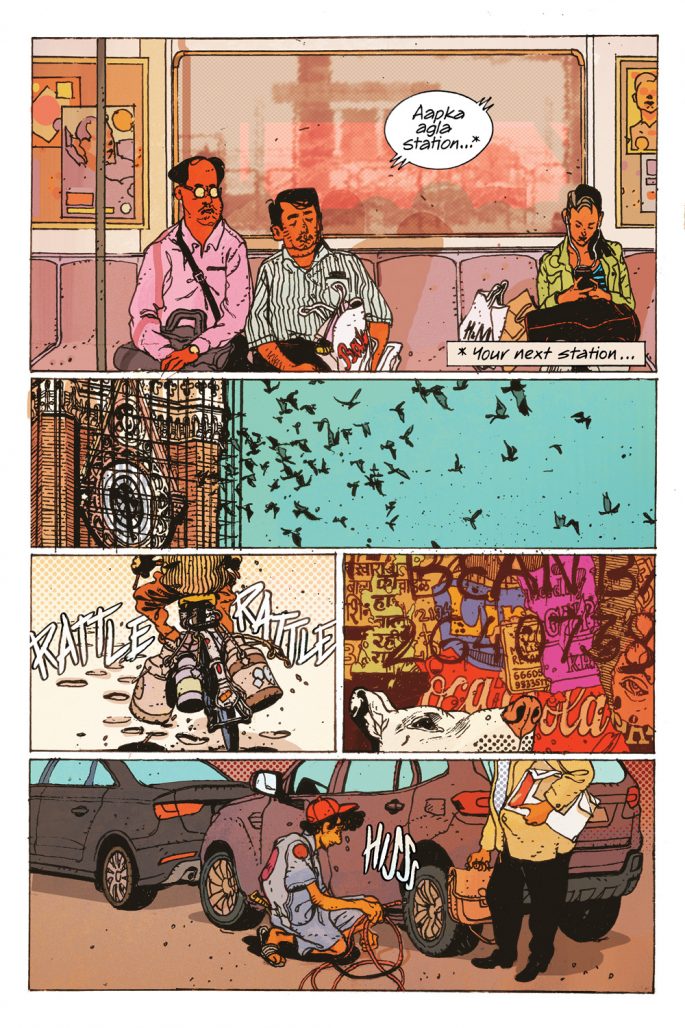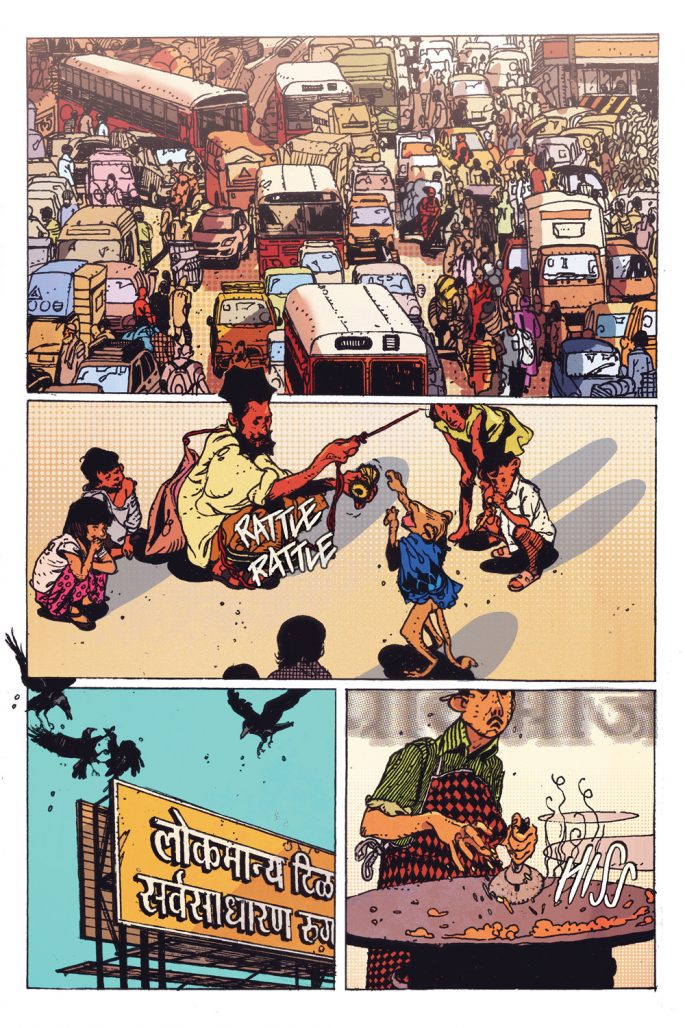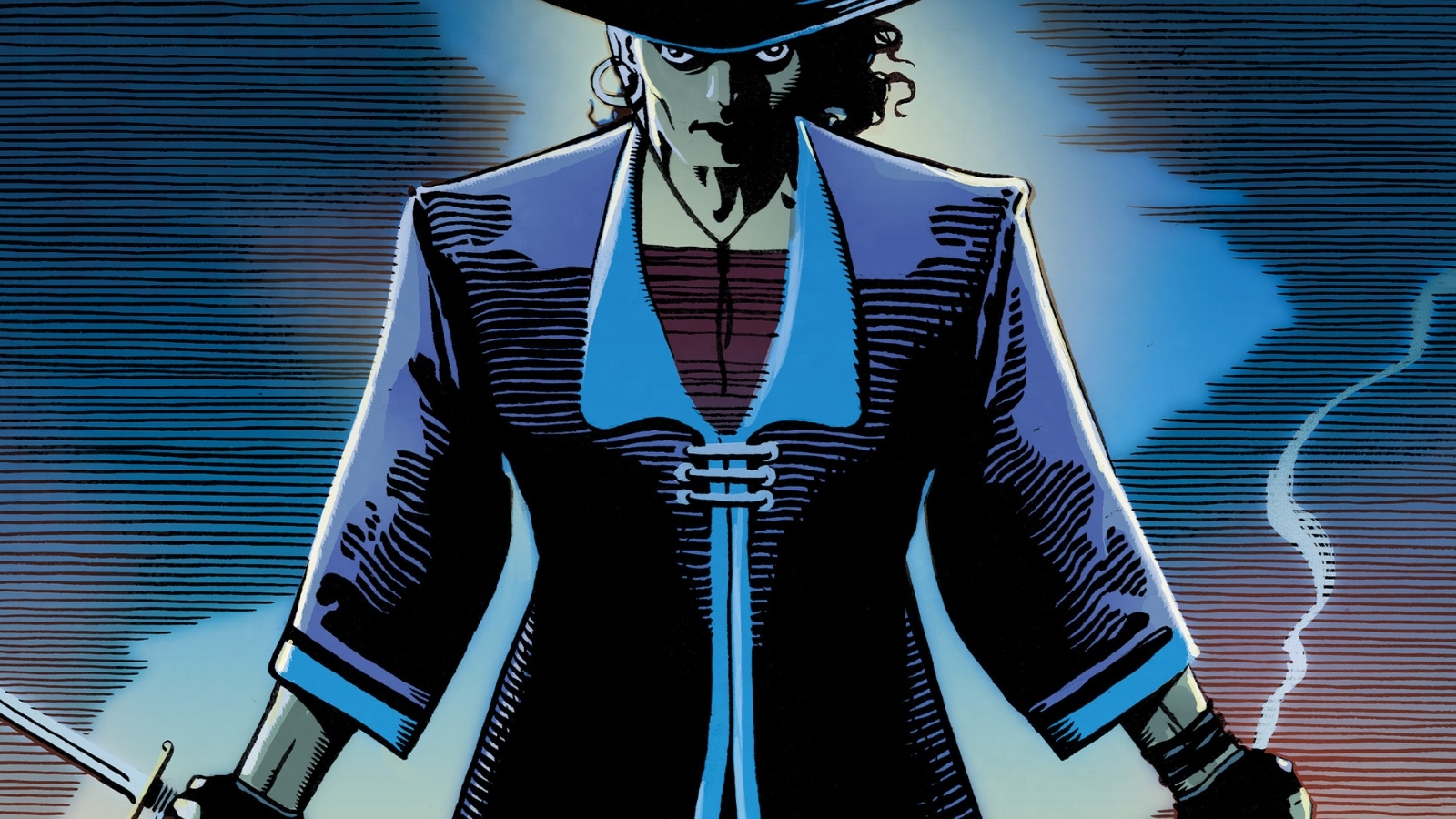Grafty’s Wall is one of the most uniquely beautiful comics I’ve read in recent memory. Even upon a quick glance at the pages, Anand Radhakrishnan’s moody artwork, paired with Aditya Badikar’s expressive lettering (done by hand rather than digitally) immediately sets Grafity’s Wall apart from anything else you’re likely to find at your local comic shop. When readers dive into writer Ram V’s story, they’re welcomed by a colorful cast of characters in a little-explored setting: a low-income neighborhood in Mumbai, India.
Grafity’s Wall is the story of four young, creative people living in Mumbai, all yearning for a way to make better lives for themselves. This includes the titular street artist Grafity, rapper Jay, writer Chasma, and aspiring actress Saira. I was thrilled to chat with rising star writer Ram V about the origins of the project, his connection to the subject matter, and India’s relationship with hip-hop culture.
Gregory Paul Silber: I’d like to start by talking about the title, as Kieron Gillen does in his introduction to the collected edition. Like him, my mind read the title as “Gravity’s Wall,” and even as I read the comic itself, I found myself thinking of the title character as “Gravity.” How much of that is intentional? And are there any other places in the book where you intended certain words, names, or phrases to evoke more than their literal meanings?
Ram V: That is entirely intentional, at least with regards to the title. I like doing that with my titles. My first self-published book was Noir set in Mumbai. I called it Black Mumba (Mumbai is named after the goddess Mumba Devi) knowing that it would also evoke images of the venomous Black Mamba. And I suppose that tells you entirely what I’m trying to do with the book.
So here, with Grafity’s Wall. We’re talking about Suresh the character, Suresh the Graffiti artist, and Suresh the boy held by the pull of his life, circumstances, city, friendships, desires and fears.
As for other places in the book that do this, I don’t think any of them do it to the extent the title does, but I also reckon that is how text works in fiction. Or to rephrase that more accurately– text used as a way of creating narrative and art often works that way to great effect. There is a literal meaning and there is an insinuated meaning and there is subtext as well.
An author while critiquing my writing once said to me, “Ram, you are an articulate writer. But sometimes, you should try using the wrong words to say things beyond their own immediate meanings.” I think that’s good advice.
Silber: It took me longer than I’m proud to admit to realize “Grafity” is a pun on “graffiti.” Graffiti is central to this book’s plot and themes. Is Graffiti something any of you have first-hand experience with–either as an artist like Grafity, or his friends who hang around his wall?
V: Outside of taking a marker to some walls in the name of literary vandalism, I don’t have firsthand experience with creating Graffiti, no. But I do have a lot of experience with appreciating it. I travel a lot and one of the things I greatly enjoy about visiting new cities is looking at street art.
The idea for this book came from a talk I attended at the London Design Festival. Graffiti artist Tom Eaton was talking about the origins of early street art and somewhere between that and wanting to write about the city I grew up in, Grafity’s Wall was born.
I discussed the idea with Anand and immediately he mentioned that there was a time he went around the city painting murals on the walls. I know for a fact that his terrace has a gorgeous mural on one of the walls. So, it seems I was talking to the right person about this. You can’t engineer that kind of alchemy!
Silber: There’s a lot of hip-hop in this book. I don’t mean that just because graffiti and rapping is a huge part of the plot, but thematically, it’s very hip-hop. It’s the story of four young, creative people who dream of using their art to escape from crime and poverty. How did hip-hop influence your work on Grafity’s Wall?
V: A thing that interests me about street-culture in India is that it is an unusual amalgam of modern pop-culture influences and local traditions, cultural remnants. The hip-hop influence in Grafity’s wall doesn’t necessarily come from a personal inclination (although I do love my hip-hop) – it comes from the fact that there are kids in rough neighborhoods in Mumbai who possibly lack a proper education or access to studying and learning English but are rapping in a unique combination of Hindi and English thanks to Mumbai’s cosmopolitan lingo. That is such a beautiful and unique thing and yet I didn’t find a lot of media or literature looking at that kind of cultural change and evolution. Now, with that as the driving factor behind the aesthetic choices you can add my love of Busta Rhymes, Eminem, Rakim, Madvillainy—that’s probably where the hip-hop influence comes from.
Silber: A lot of this comic’s personality comes from Aditya’s hand-lettering. Can you talk a little about that choice? What advantages does lettering by hand provide that you can’t get from today’s standard of digital lettering?
V: It does! The hand lettering is such a powerful signifier of aesthetic. It is beautiful in its imperfections and that has such brilliant synchronicity with the story. I think Aditya is better placed to discuss the intricacies of what hand lettering does over digital and such. But for me, the single most important thing about Aditya deciding to hand-letter this is the craft he brings to it and the authenticity that it brings to the story.
This book feels “crafted” v/s “produced” and I think there is real artistic value to that. To know that someone sat down and wrote every letter, made every mark. To be able to see that reflected on each page is of fundamental importance to how this book feels and how the story is experienced by the reader.
Silber: There aren’t many other comic books on the stand that take place in Mumbai, or even India in general–at least in the US where I live. Grafity’s Wall is in many ways a universal story, but it also heavily explores the culture of modern-day Mumbai. What are some takeaways you hope readers will gain from reading such a grounded story about a city and culture they may not be familiar with?
V: I don’t endeavor for any takeaway outside of a story that made the reader feel something. A story that evoked a real, human reaction. Because really that, to me, is the most beautiful thing about setting stories in Mumbai. That I can tell a story of a place that is familiar to me, tell it to people who have never been to Mumbai and still convey to them the very real humanity at the center of my narrative, my characters and my city—that in itself is a rewarding experience.
I used to travel a lot as a Chemical Engineer. I went to a lot of countries I had never visited before, stayed on my own in obscure industrial towns where tourism is sparse. I discovered cultures and traditions and local stories and legends. And yet through it all, I found that there is commonality of human experience. People fundamentally want similar things, they worry about similar things, the things that bring them joy are similar. If I can communicate this fact through my fiction, it will have been a rewarding experience.
Published by Dark Horse Comics, the expanded edition of Grafity’s Wall is on sale now. You can read the full first chapter of the book here.


